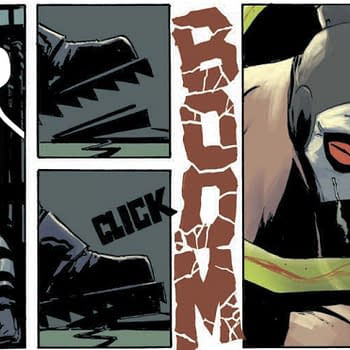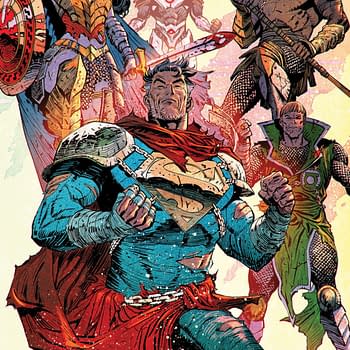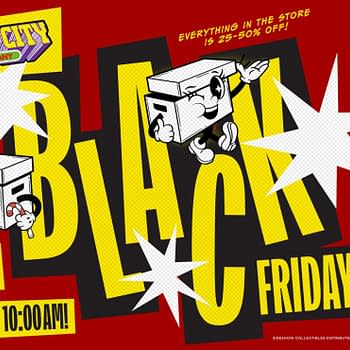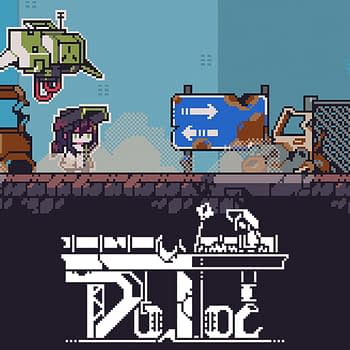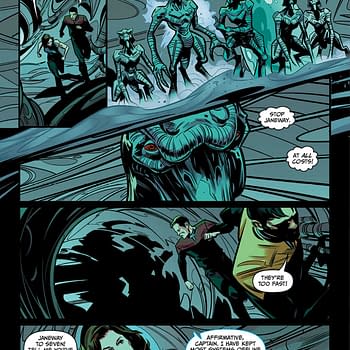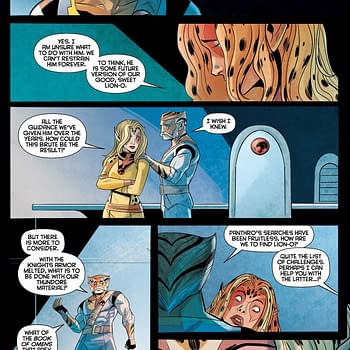Posted in: Comics, Recent Updates | Tagged: Comics, india
The Comics Of India by Mayank Khurana
Mayank Khurana writes for Bleeding Cool.
India is a country of diversity. Consider this: India is the seventh largest country by geographical area and second largest by population (approx 1.1 billion people). It is the world's largest democracy. It is a country where language (22 National Languages and 843 regional dialects) and culture changes drastically every few hundred kilometers so much so that it becomes unrecognizable even to those of us living here.
Talking about "Indian comics" in such a dynamic environment is no mean feat. This article attempts to look at the advent of comic culture in India and how it is faring currently. Along the way we would be pointing out some notable periodicals that made a difference to this growing subculture
The Advent of Modern Comics

The true change came in mid 60's when a national newspaper publication house – The Times of India – launched Indrajal Comics. This was the first serious effort to develop comic culture as these were well within the reach of masses and available at newsstands everywhere. Indrajal comics contained stories of King Features characters and were successful in making Phantom (the ghost who walks), Mandrake the Magician and Flash Gordon household names. It also went on to Publish "Bahadur" an Indian comic hero created by indigenous creators. Indrajal comics went regional soon thereafter starting with Bengali translations and by 1980 they were publishing comics in over a dozen Indian dialects.
The Glory days

Like Anant Pai, Cartoonist Pran created the next evolution when he went beyond historical and mythological tales. He created regular everyman characters that people could relate to and narrated their tales under the banner of Diamond comics. They were humorous strips and quickly caught people's fancy. Some of his popular characters are Billo, Pinki , Raman , Channi Chachi , Srimatiji. Most famous amongst them however is undoubtedly the duo Chacha Chaudhary and Saboo known India wide. I can safely compare Pran to Will Eisner in terms of reverence and Walt Disney in terms of creative output.
After this a few other regional comic magazine started up like the ones by Jaico Publishing house, Chikara collections etc but none as noteworthy as the ones mentioned.
In the beginning of 80's Amar chitra Katha launched a children Magazine "Tinkle" which focused on contemporary culture , folk tales and science. The magazine introduced numerous recurring heroes like amusing Suppandi, Mooshik the adorable mouse, Kalia the crow and the malicious minister Tantri.
Indian comic culture had truly begun by now. Almost all of these publications went into regional languages and established themselves amongst the masses.
The emergence of the SuperHero

Raj comics introduced the colorful world of superheroes that we all love to India with unique Indigenous SuperHeroes. The most famous amongst them are Nagraj ( a snakeman) and Super Commando Dhruv (a highly trained circus acrobat with no superpowers – Reminds me of Nightwing!).
Bouyed by their success, many other publications came out with their versions of Superheros, most notable among them were Tulsi comics , Manoj comics , King comics, and Fort Comics. Even Diomond comics ventured into Superhero Territory soon thereafter.
This was the hey dey of Indian comics. There were choices a plenty from companies to genre. They were ubiquitous and present at almost every newsstand. Comics reached millions and millions during this time. Many people I know have grown up with a healthy dose of these comics. If you were a kid in India and you knew how to read, you were reading comics.
There were some truly interesting characters created during this period and definitely deserves an examination in a separate article.
At death's door
But in 90's things began to go bust. With emergence of cable television and animations, comics soon started to lose ground against them. It did not help that many started considering comics as "Low Brow". In metropolitans came the Home Computer and the cultural shift towards a preference for English. This sounded the death knell of many a publications.
The first one to go was Indrajal comics on 16th April 1990 after nearly 27 years of publication. By the beginning of the new century many comics had either reduced their output or had gone out of business.
Resurgance
Despite the bleak scenario some comics did flourish in this decade by adapting themselves.
Amar Chitra Katha survived by offering a unique product. Tales of history and religious mythology in English (other regional languages as well). So they entrenched themselves as the elite and educational amongst comics. Tinkle evolved its format, similar to Japanese tankobans but in color.
Raj comics survived due to its deep penetration (and lone superhero company left standing) while Diamond due to cherished characters. Both have started to grow again.
In 2006 Virgin comics took India to a global stage. They took a leaf out of Amar Chitra Katha's book and started publishing Indian Mythological rooted comics but for a foreign crowd.
Gotham comics of Bangalore started publishing adventures of Dc/Marvel Characters in India, bringing the cost down. They however have gone MIA lately.
Hope for the Future
Now many more comics have started cropping up, some even backed by big business houses.
Fluid Friction comics have partnered with an Indian firm to publish comics inspired by Indian mythology.

Another company Vimanika has launched comics , again based on Indian Mythology for Indian and foreign markets, which are very good.
Do we see a pattern here? Yup, everyone seems to love Indian mythology. But enthusiasts question the overabundance of such comics. However I cannot deny that Indian religion and allure of Indian mysticism sells, especially now that many Indians are settled abroad. They are also appealing to children in India, as they retell/ re-imagine the mythos that they have grown up reading about. So for business houses it makes sense to go with the safe and sellable product especially on foreign shores where there already is a comic culture. But what of our own comic culture? Will we never be able to look beyond religion and myth? Even Indians deserve variety. If the product is good, it will sell. Japan's Manga industry is proof of this.
As if to answer this question, Campfire publications entered the market in 2009. They are publishing classics, biography and originals in graphic novel format.

Corridor by Sarnath Banerjee is such an example.
Two more noteworthy additions to Indian comic scene are– "Jump" by Level10 studios and Comix.India who are trying to develop unique Indian content. The quality is debatable, though it's a step in positive direction.
The picture is not all rosy however, and there is a long winding road to cover before victory.
An artist working freelance for one of these companies told me that by and large it is quite difficult for someone to work for Indian comic scene because they are not paid nearly enough. They need to have a full time job apart from comic industry to sustain them. Most of them are working in the growing Indian Animation scene as well. This is not true for all artists as some larger companies do pay well. But for a wider majority it is. Which I guess is true in any country. You need to have a certain level of skill before you can enter mainstream.
Additionally, Anime and Manga like everywhere else have caught up in India. With Anime associations forming in major cities. Though this is still at a nascent stage, their future is bright. I have randomly met two children of 8 years old who read Manga but are not aware of any other comics out there. Manga is catching them young. A feat that may make many companies jealous. The reason is their free availability over Internet.
Companies like Dark Horse/Image/Viz may scowl at sites like Onemanga, but it helped introduce manga to country like ours where there is no availability of such items. When you contrast it to companies like Marvel and DC, not many people know beyond what they see on the silver screen.
Manga has infact started pouring in through select stores, especially in the south, and they are selling like hot cakes because of the readymade audience thanks to online availability.
The biggest news yet is an attempt at organizing a comic convention. The first ever for India. From what I know, currently the organizers are looking out for sponsors. But the thought is there and it may be very soon when we see it materialized.
For me, the icing on the cake was when I met an Indian artist working for TOP COW publishing, which clearly told me, we do have the talent, and we know readers seem to be growing. All we need is a big push from some of the corporates to get Indian comic scene going again and things does seem to be going in the positive direction.
Here's hoping for the best.
–
Mayank Khurana is a comic enthusiast (total geek) and reads everything from western to Indian to Manga to Franco-Belgium comics, then regurgitates them at here.
Since he lives in India, sourcing comics has always been a problem but he still manages even it means taking part in an infinite civil war of crisis. His dream combines two of his biggest passions, Comics and Travel:-To go on a "Comic Trek" from one major comic publishing country to another and meet other comic fans out there and bask in all the geeky glory.






